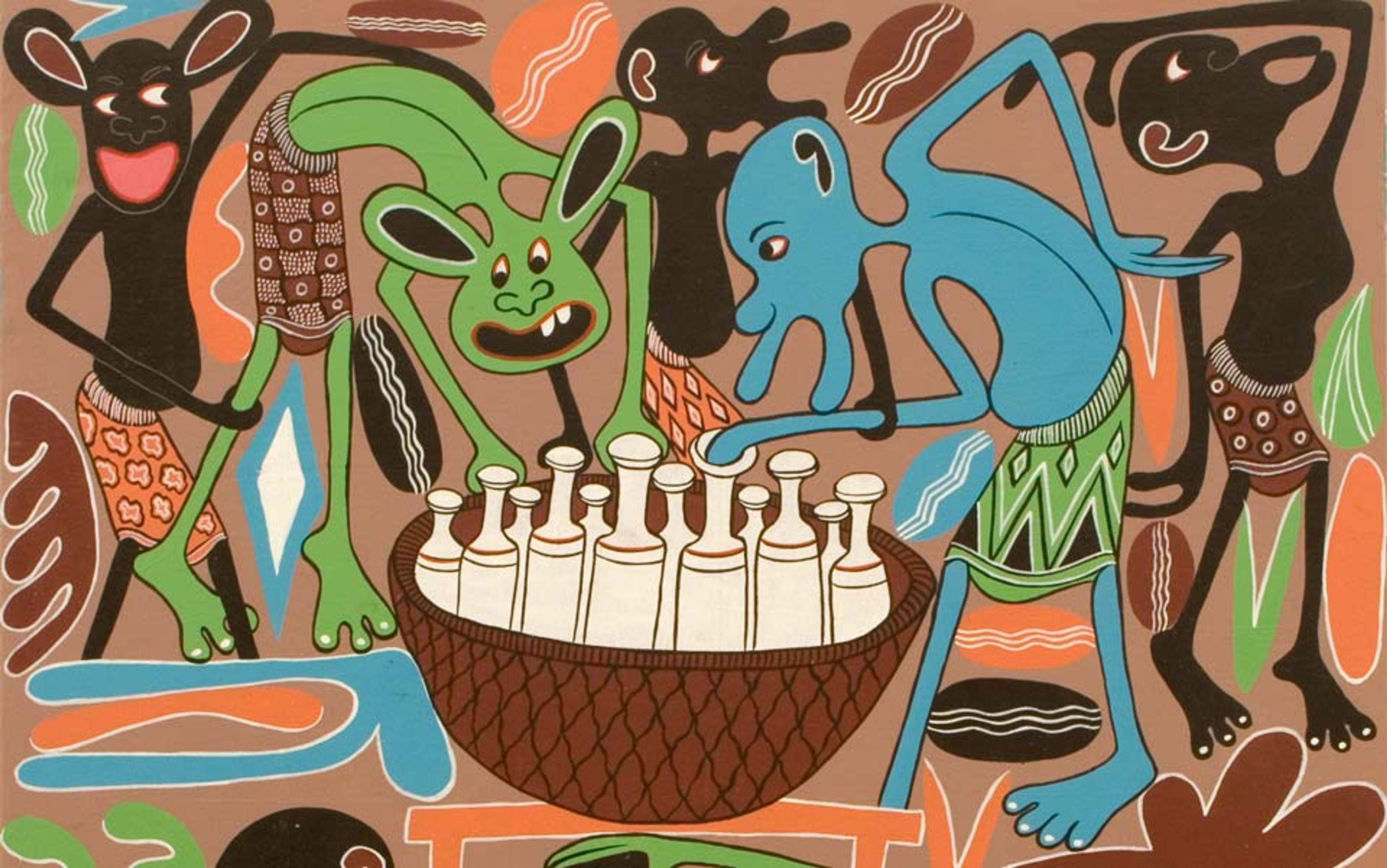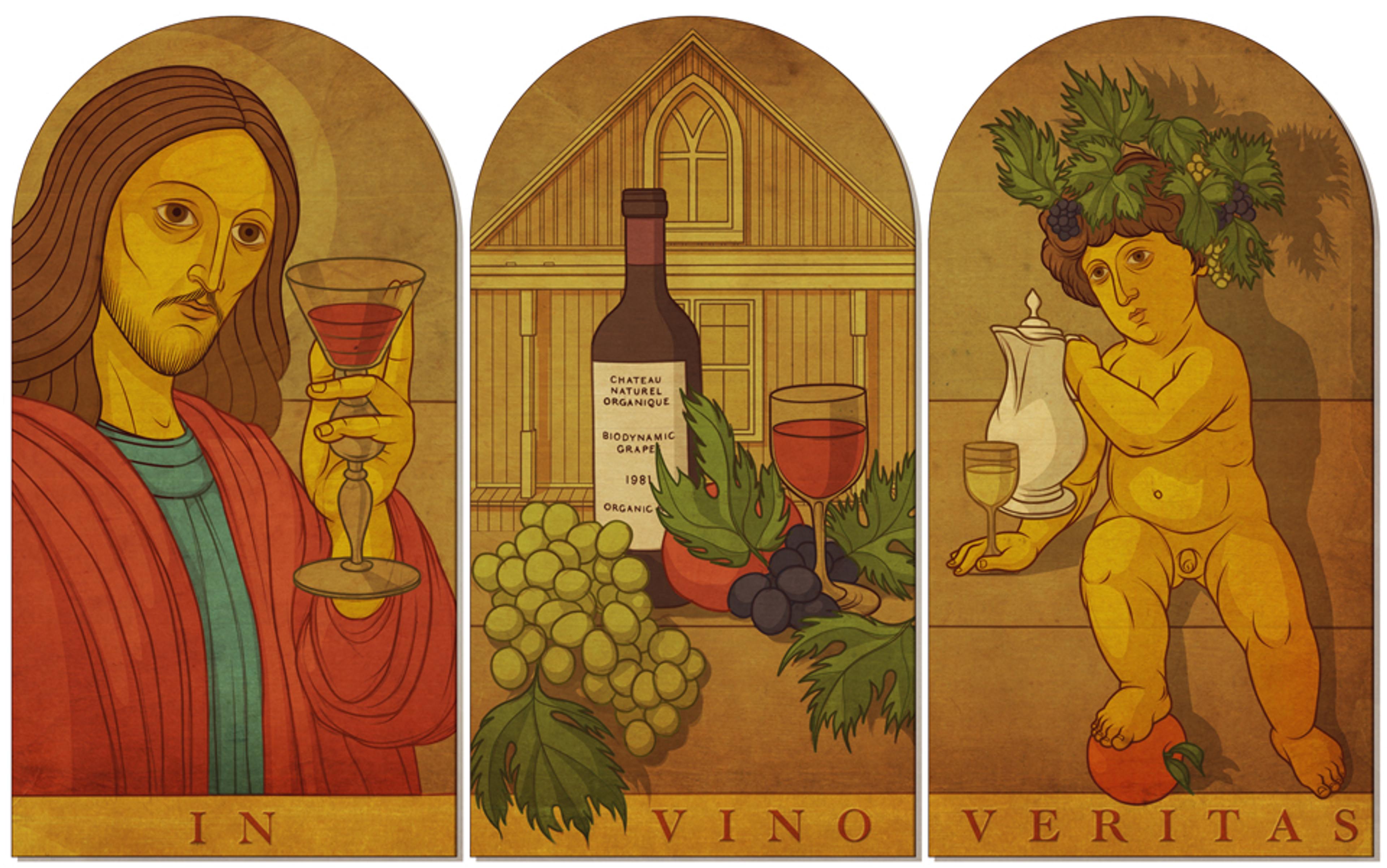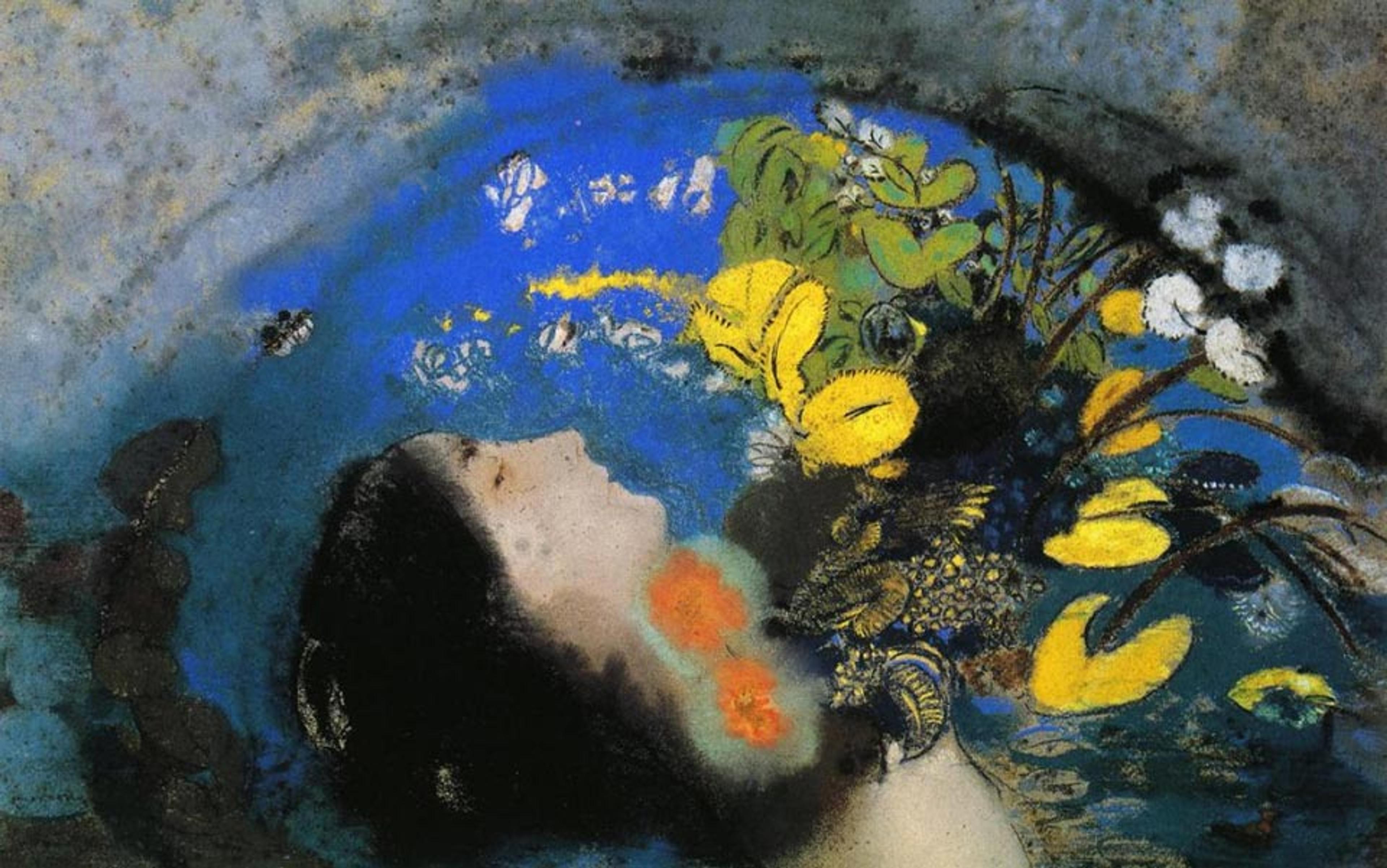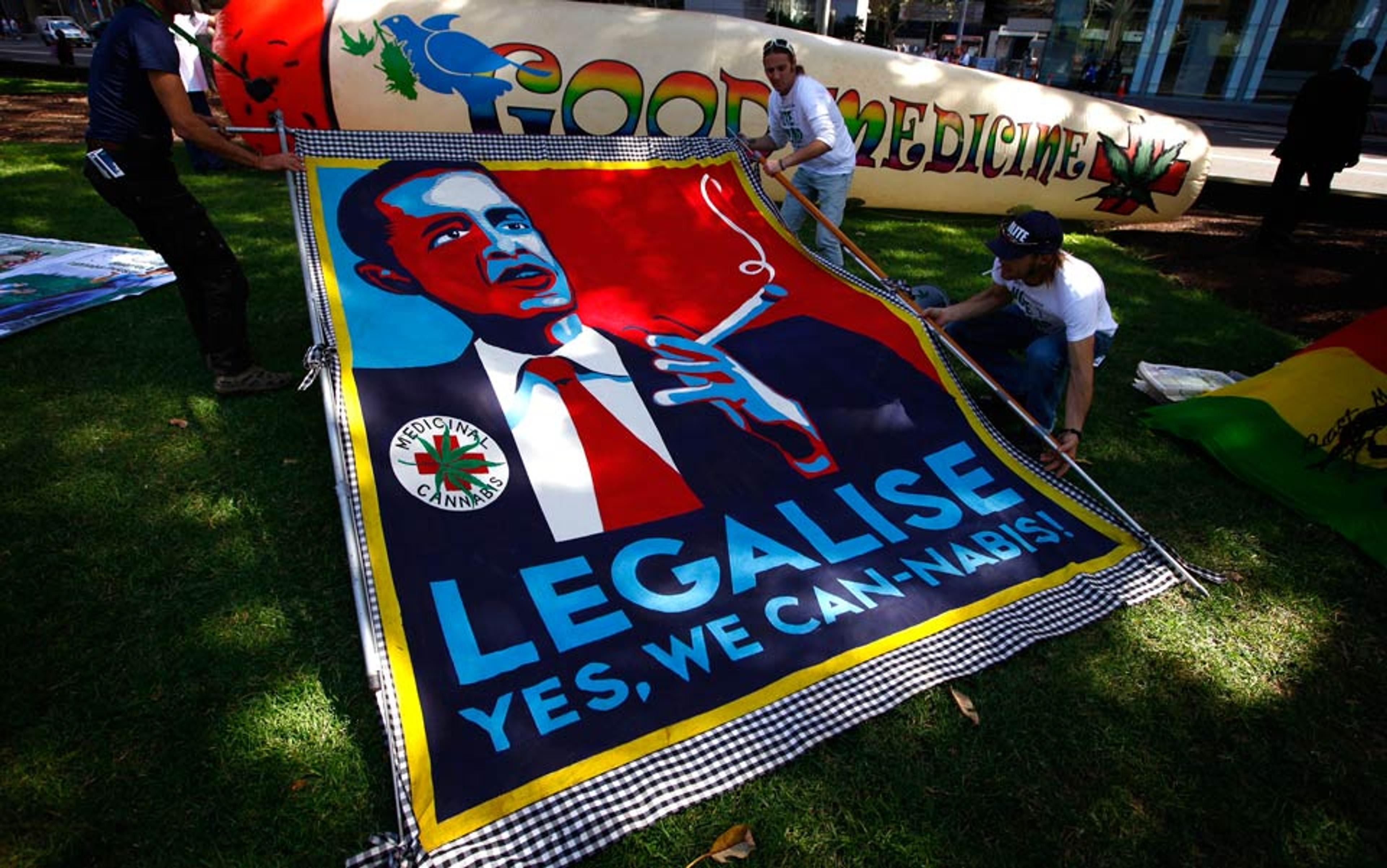Brian Hunt and I sat under a redwood tree in his rutted, gravel driveway in a rural part of Sonoma County, California. We were somewhere around Santa Rosa, but I couldn’t say where, and nor could my dashboard Garmin. Among the towering trees and rolling vineyard hills, cell signals fizzled and GPS was useless. I was lost.
I had come here to find a recluse. Brian brews under the name Moonlight, and his beers are cult favourites for those in the know. Some call Brian a curmudgeonly loner; others a shaman. He doesn’t reveal his tricks easily. His phone manner is gruff and his emails are curt. His first to me, when I asked for an interview, began ‘I am difficult to pin down.’ ‘Emails are unreliable,’ he wrote. ‘Chaos here now.’ I could come if I wanted, and if I could find the place. No promises.
I drove north on Highway 101, pulled off around the manicured Kendall-Jackson winery château, and went west on a furrow-straight, farm-country lane, past billboards advertising gold-medal pinots and tasting-room hours. I turned onto a signless dirt road, then another, bouncing between pine trees and hop trellises, and parked next to a dusty Dodge Sprinter van and even dustier pick-up truck. I glanced at the licence plates: ‘HALFBBL’ and ‘CRZYLUN’.
I met Brian in the brewery, squeezing around a pile of empty kegs in an airless barn stuffed with buckets and kettles and hoses, all seemingly half-operational. On the wall, a stained scrap of paper read ‘Beer is not an industrialised product’. Sitting down with Brian in a pair of weathered Adirondack chairs among a pile of open bottles, I noticed that he seemed to get more feral from the top down. His close-cropped white hair gave way to a scraggly beard that drained over his neck into the frayed collar of his t-shirt. Below that, washed-out jeans, from which poked a pair of bare, hairy, hobbit-like feet, as if he were growing roots.
Brian toed aside an open can of gasoline, saying its fumes were interfering with our beer tasting and opened a new bottle. Number five? Number six? One tasted like Coca-Cola, another like Twizzlers. One like peach fuzz, musty and sweet; another minty, cedar-like and cool.
‘Taste this,’ he said. The beer opened bready and dark with a hint of hazelnuts, like a slice of rich, country toast. And then, something odd. Liquorice? A touch of grated orange peel? A sprinkle of sage? ‘Nope,’ Brian said, a glint in his eye, and plucked a branch from the redwood overhead. ‘Now, nibble on that.’
Really? I thought. I had munched raw brewing grain, sniffed fresh hops, but never this. ‘Back where it’s barky, you get tannins, like when you leave a tea bag steeping for too long. The palest growth, the tips, are very citrusy. Crunch them with your teeth so you crack them open,’ he told me. ‘When the weather is cooler, the twigs come up light green. Fluorescent, almost. This year, ’cause the weather was so different, I couldn’t get as much of that as I wanted. I got more of the dark green, piney flavours. It tastes like a Christmas tree, or even a little liquorice-y, like an adult Dr Pepper.’ He smiled – the first time today. ‘I don’t think they use redwood in theirs, though.’
This was the secret to that beer. Brian calls it Working for Tips, and he brews it with these very branches. Picking bark from my teeth, I asked him where he got the idea. ‘Just by chewing,’ he said with a shrug. ‘You can’t find an iPhone app to tell you when to pick the twigs. You gotta chew the tree.’
Brian is a Pan-like trickster, and his beers are magic. They exist in this world, but gesture beyond it. Rooted in one place, they transport the drinker to another. On that bright dusty afternoon, Working for Tips sent me deep into northern pine forests. As I sipped, the wine-country sun flickered off behind the boughs above, the air cooled and deadened, the world muffled in mist. Brian’s yard was already off the grid, but now I was completely off the map. Here be monsters. A beer that tastes like trees?
Pre-medieval societies often revolved around a shaman, a sort of multi-purpose community leader: a medium, a translator between the physical and the spiritual world. ‘The shaman is both healer and sorcerer, human and divine, human and animal, male and female,’ the ethnographer Piers Vitebsky wrote in Shamanism (1995), his guide to shamanic belief systems around the world. The shaman was a gatekeeper, and beers were his keys into another world.
Alcohol was a doorway, or what ethnographers call an entheogen. From the Greek for ‘creating god within’, an entheogen is a drug used in a religious context, a tool or a pathway to mystical understanding of the sacred or spiritual dimension. Drunk in ritualistic communion with the recently killed, for example, in what the Norse called a totenfolge, or ‘following into death’, potent beers were acts of solidarity that put the living into a kind of transcendent, paranormal state. But alcohol wasn’t the only magic in these drinks.
Ergot is powerful stuff. The fungus shares some of the same chemical compounds as LSD
Northern shamanic brewers made use of a substantial apothecary. At an early brewery site in Skara Brae in Scotland, for example, archaeologists found residue of a beer made with henbane, hemlock, meadowsweet and nightshade. Beers such as this are heady indeed. Hemlock is a well-known poison; henbane is mildly narcotic, supposedly producing a feeling of flight, and was a common component in witches’ flying potions. Nightshade, or belladonna, disrupts the nervous system, causing delirious hallucinations. (Ironically, it was among the hallucinogenics used during the Inquisition to torture some of those same potion-wielding witches into confessing.) Meadowsweet, the mildest of the lot, still isn’t exactly neutral. It contains some of the same anti-inflammatory chemicals as aspirin.
Some Nordic shamans were fond of a parasitic fungus called Claviceps purpurea, or ergot, which grew on rotted barley and rye. Archaeologists have found its tell-tale bloated purplish grains in the guts of buried bog bodies. Ergot is powerful stuff. The fungus shares some of the same chemical compounds as LSD. The good side: wild hallucinations, ecstatic dancing – doctors call this ‘convulsive ergotism’. The bad, ‘gangrenous ergotism’, causes abdominal pain, convulsions, a sensation of burning limbs called St Anthony’s Fire and, ultimately, death. Gangrenous ergotism is perhaps caused by a different strain of the fungus, though we apparently lack for test subjects to figure it out conclusively.
As the world slowly modernised, and the shaman’s fiery spell sputtered out under chilly churchly rule, spices lost little of their potency, their transformative power now more metaphoric than narcotic. Before their true geographic origins were discovered by explorers such as Christopher Columbus, Vasco da Gama and Marco Polo, spices arrived at the medieval table after a bafflingly circuitous journey. A single clove, say, was picked from a myrtle tree on the Maluku Islands in Indonesia, then pin-balled to and fro in the archipelago, and scooped up by a Chinese trader. Brought to India, it went out through the Malabar coast, via dhow into the Persian Gulf, by caravan through the Arab sands to the Mediterranean, and north into Italy before finally being funnelled into the brimming markets of Amsterdam; or farther still, out past Gibraltar and up to London’s docks, where in 1665 an awed Samuel Pepys strode about among the brimming kegs below deck, ‘whole rooms full … as noble a sight as ever I saw in my life’. With origins so strange and distant, most assumed spices grew in Paradise.
The shamans transformed too, becoming ‘spicers’, employed by medieval manors as if they were on-call doctors. Hot and dry in a cold, wet age, spices such as ginger and pepper balanced the humours, these proto-doctors thought. Blessed thistle, for example, gets its Latin name Cnicus benedictus from its use in Benedictine tonics. Often, these medicinal spices were delivered in beer. Specific beers were said to cure specific ailments, from coughs to tumours, from ‘the stone’ to ‘the itch’. Ale with garlic, sage and a bitter evergreen shrub called rue treated a rabid dog bite. Bee balm, wrote the 16th-century Italian naturalist Pietro Andrea Mattioli, ‘purgeth all melancholy vapours’.
An early Christian botanist wrote that hops ‘make the soul of man sad, and weigh down his inner organs’
Hops are used in almost all beers these days – by law in the US, in fact: brew without them and it’s technically a food product, and regulated by the US Food and Drug Administration, not the Alcohol and Tobacco Tax and Trade Bureau, a legal snafu most brewers would rather avoid. Yet hops were not only uncommon back then, but poisonous. The medieval abbess, mystic and early Christian botanist Hildegard of Bingen wrote that hops ‘were not very useful’. They ‘make the soul of man sad, and weigh down his inner organs’. Before its Extra Special Bitters and India Pale Ales embraced the vile weed, Britain hated the hop – hopped beer, sneered Andrew Boorde in 1547, ‘doth make a man fatte, and doth inflate the bely, as it doth appere by the doche [Dutch] mennes faces and belyes’. (Ironically, once hops finally started working their way into British beer, the Dutch became one of its biggest importers.)
So why use them? Hoppy beer is better, at least, than old, stale beer. Hops’ bitter oils contain lots of preservative chemicals that keep beer fresh and safe from bacterial contamination. When beer became more than home-brewed refreshment or doctor’s orders and turned into an international commodity, unspoiled beer was a financial imperative and less-preservative herbs such as mugwort all but vanished. The hop was king.
But I would dethrone it. Herbal beer might be rare these days, but has it lost its power? To find out, I had to transform myself – I had to turn shaman. I had to brew.
So I headed to the natural food co-op. I was looking for mugwort, wormwood, bog myrtle, gale and yarrow, a commonly prescribed cure-all mix called ‘gruit’. A throng of shoppers mobbed the bulk spice rack, stocking up on chia seeds and rose hips, sniffing the garam masala, filling hemp satchels with hemp seeds. Checking a shopping list of potential hallucinogens, I had anticipated sidelong looks. But among this crowd, my herbal mix was as commonplace as parsley and sage. So common, in fact, that the grocery store was out of mugwort.
Dejected, I headed home. What would a shaman do? I wondered. Just then, like a vision, I turned a fragrant corner. Rosemary grows wild in San Francisco’s Mediterranean climate, so I surreptitiously snipped a few sprigs. On my short walk, I found sage, yarrow, eucalyptus and pine. At home, I mixed up a kettle of malt smoked over peat moss, a little honey from my beehive, and some frozen cranberries. I added my herbs and poured it into a gallon jug – the biggest Nordic cauldron I had. After a week of fermenting, it was time to drink. Sharing these beers, after all, was a ritual as important as brewing them. I couldn’t worship alone. I gathered a few friends and opened a bottle.
The rosemary was especially potent: undried, unmeasured, wild-foraged
The beer came out pine-y and warming, a bit like a campfire, but drawn with an unfortunately heavy hand – more like the ‘wild-crafted desert piñon’ incense from aisle 12 than the trees I passed on my walk home. The rosemary was especially potent. Undried, unmeasured, wild-foraged, I couldn’t guess how much to use. ‘It’d go well with chicken,’ a friend said.
Brian was more diplomatic. Back in Sonoma, under his redwoods, after making our way through his medicine chest, we opened a vial from mine – we filled our glasses and added another empty bottle to the pile in the gravel. He paused to think – my tape recorder was beer-sticky by this point in the boozy afternoon, but it was still running. This was on the record, and Brian chose his words.
‘It’s got a lot going on,’ he said. Another pause, and then he hoisted his hazy, yeast-flecked glass with the best compliment he could give an aspiring shaman. ‘If you give this to someone they might say: “This isn’t beer. What is this?”’
This essay is an edited excerpt from the author’s new book, The Brewer’s Tale.






